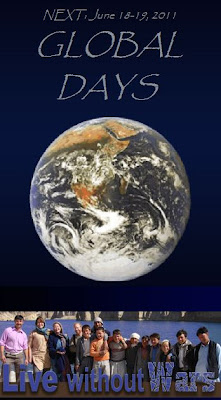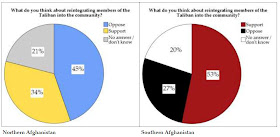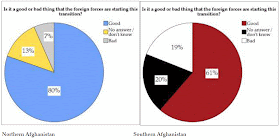
A new report out of Brown University estimates that the U.S. wars in Afghanistan and Iraq--together with the counterinsurgency efforts in Pakistan--will, all told, cost $4 trillion and leave 225,000 dead, both civilians and soldiers. The researchers have deliberately used the lowest estimates for the human cost in Iraq, Afghanistan and other countries. Many studies have estimated even higher numbers.
They have a great web page. With reports and data analysis for the human, economic, social and political costs, as well as sections on who benefits and alternatives and recommendations.
The group of economists, anthropologists, lawyers, humanitarian personnel, and political scientists involved in the project estimated that the cost of caring for the veterans injured in the wars will reach $1 trillion in 30 or 40 years. In estimating the $4 trillion total, they did not take into account the $5.3 billion in reconstruction spending the government has promised Afghanistan, state and local contributions to veteran care, interest payments on war debt, or the costs of Medicare for veterans when they reach 65.
The Congressional Budget Office, meanwhile, has assessed the federal price tag for the wars at $1.8 trillion through 2021. The report says that is a gross underestimate, predicting that the government has already paid $2.3 trillion to $2.7 trillion.
The Costs of War Since 2001: Iraq, Afghanistan, and Pakistan
Executive Summary
Watson Institute for International Studies, Brown University
Eisenhower Research Project, June 2011
Highlight of Costs from Reuters
FINANCIAL TOLL:
* Congressional war appropriations to Pentagon since 2001: $1.3 trillion
* Additions to Pentagon base budget: $362 billion to $652 billion
* Interest on Pentagon war appropriations: $185 billion
* Veterans' medical claims and disability: $33 billion
* War-related international aid: $74 billion
* Additions to Homeland Security base spending: $401 billion
* Projected obligations for veterans care to 2050: $589 billion to $934 billion
* Social cost veterans and military families to date: $295 billion to $400 billion
Future spending requests:
* 2012 Pentagon war spending: $118 billion
* 2012 foreign aid: $12 billion
* 2013-2015 projected war spending: $168 billion
* 2016-2020 projected war spending: $155 billion
ESTIMATED TOTAL: $3.7 trillion to $4.4 trillion
ADDITIONAL interest payments to 2020: $1 trillion
CONSERVATIVE DEATH TOLL ESTIMATES BY WAR ZONE:
Afghanistan: 33,877
Iraq: 151,471
Pakistan: 39,127
CONSERVATIVE DEATH TOLL ESTIMATES BY CATEGORY:
U.S. military: 6,051
U.S. contractors: 2,300
Iraqi security forces: 9,922
Afghan security forces: 8,756
Pakistani security forces: 3,520
Other allied troops: 1,192
Afghan civilians: 11,700
Iraqi civilians: 125,000
Pakistani civilians and insurgents: 35,600
Afghan insurgents: 10,000
Iraqi army during U.S. invasion: 10,000
Journalists and media workers: 168
Humanitarian workers: 266
TOTAL: 224,475


























